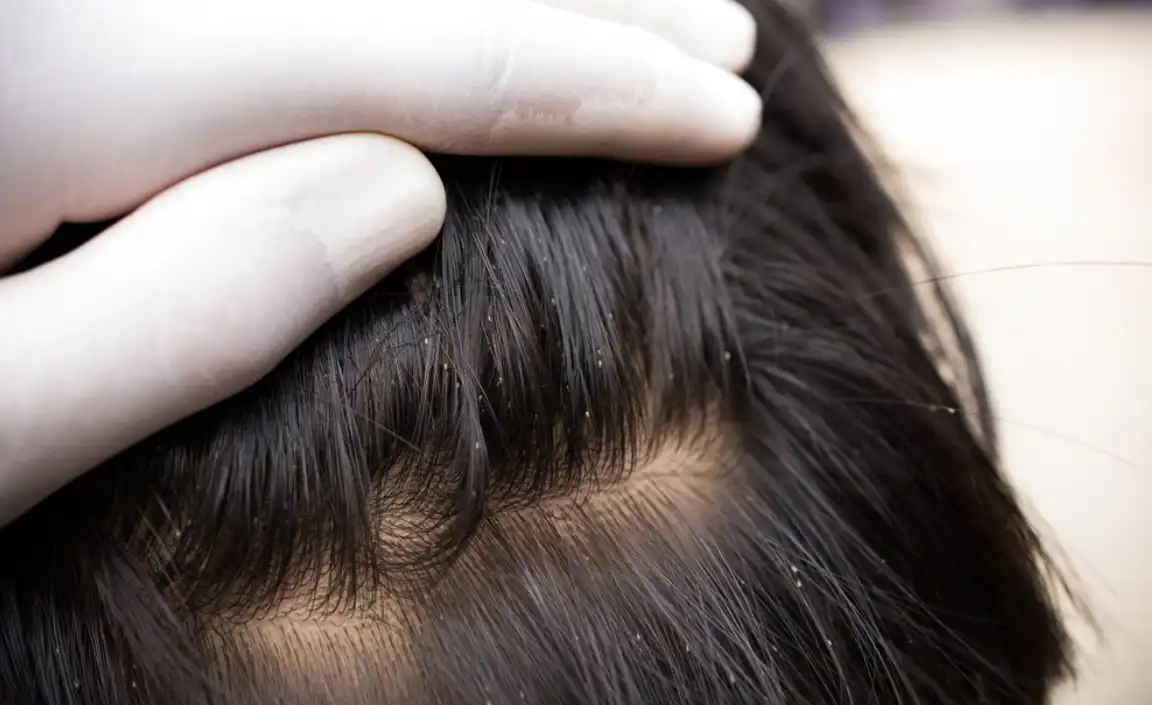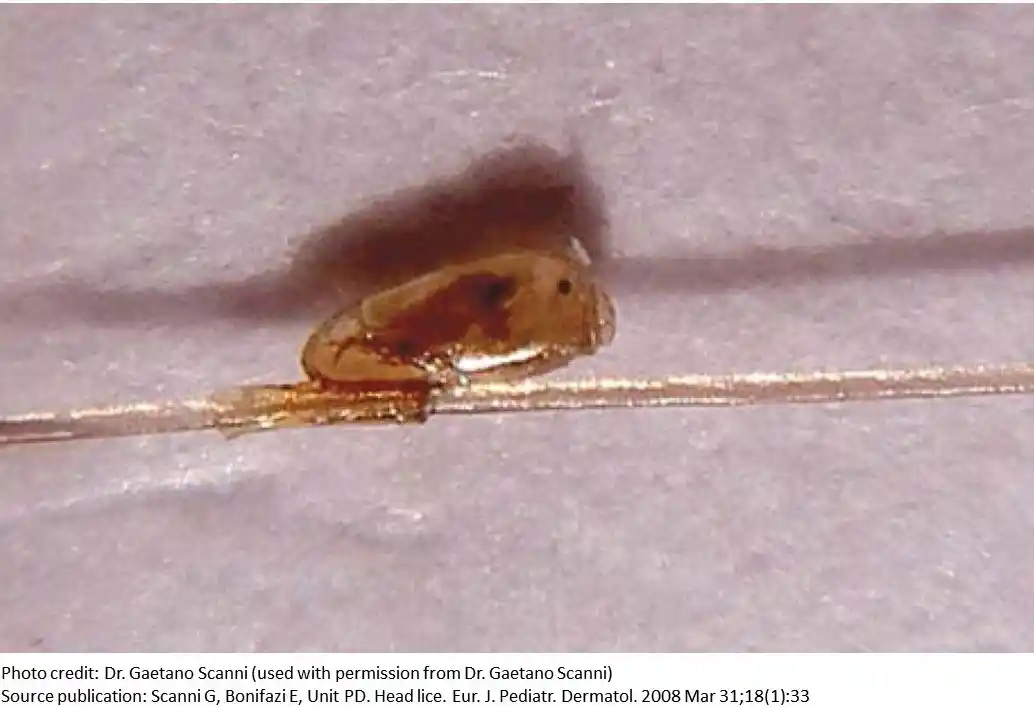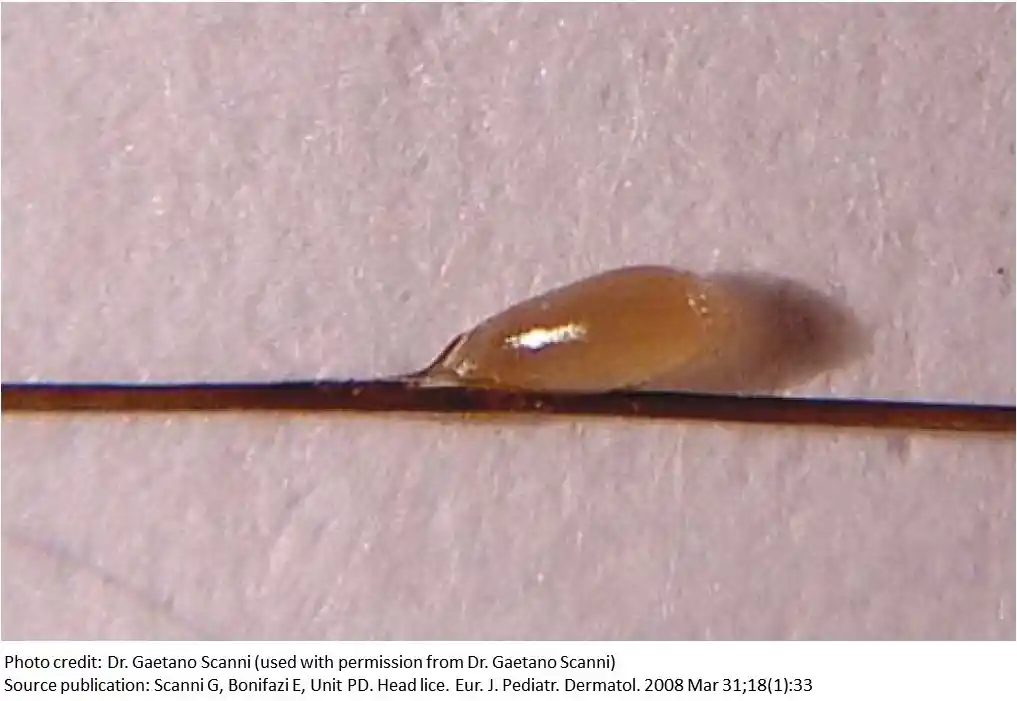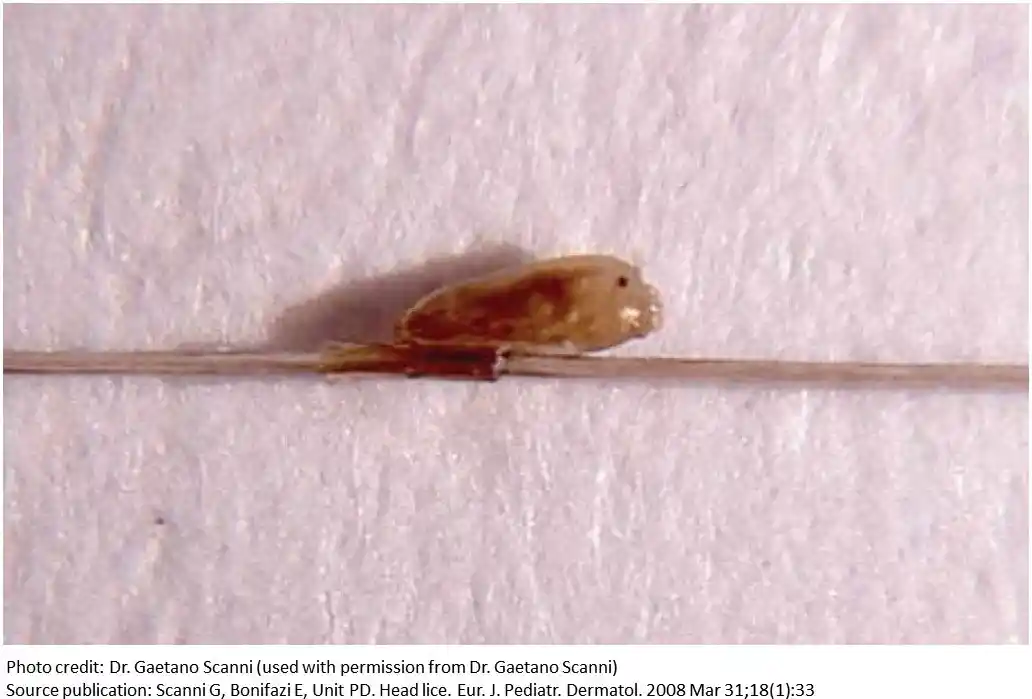If you are looking for detailed pictures of head lice and lice poop pictures, you arrived at your destination.
Head lice are generally very tiny and not easy to spot. However, through keen observation, you can actually see not only lice, but also lice eggs (nits), and lice poop on hair. This article will, therefore, examine the images of head lice, lice eggs or lice nits, lice poop, and lice bites on people’s hair and scalp.
Page Contents
Head Lice Feces (lice poop or droppings) Photos
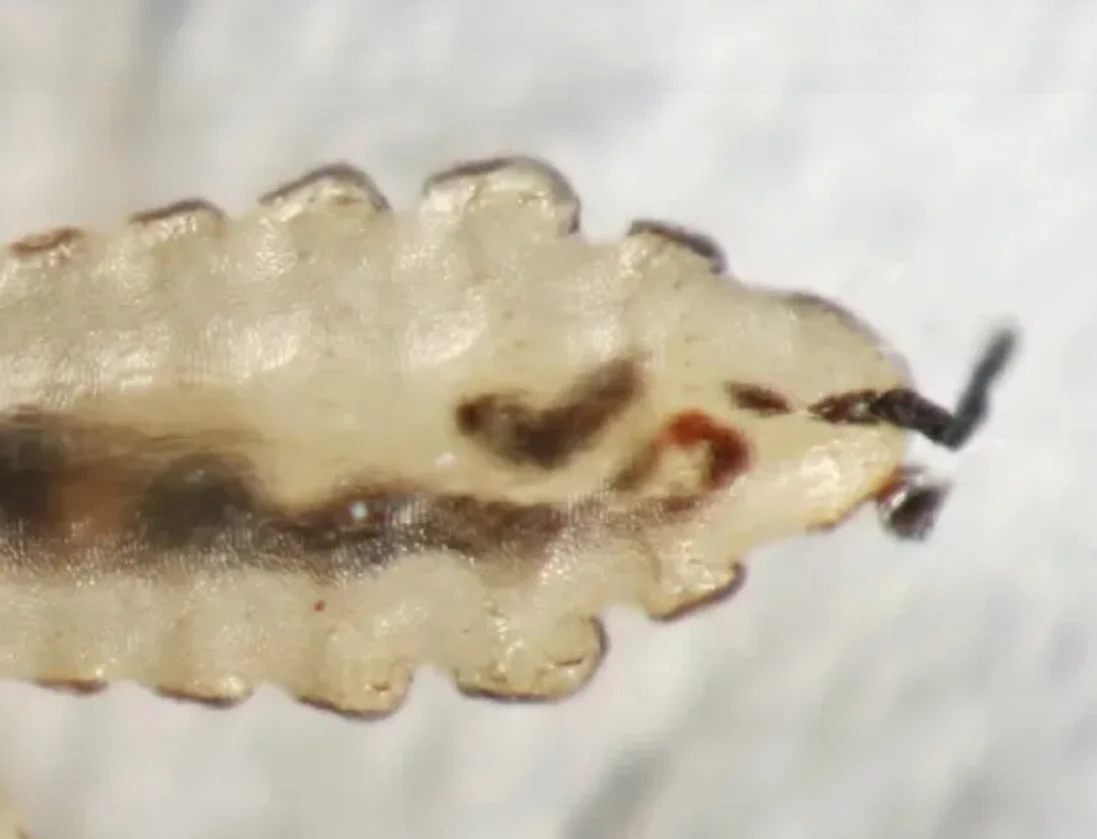
Do Lice Poop?
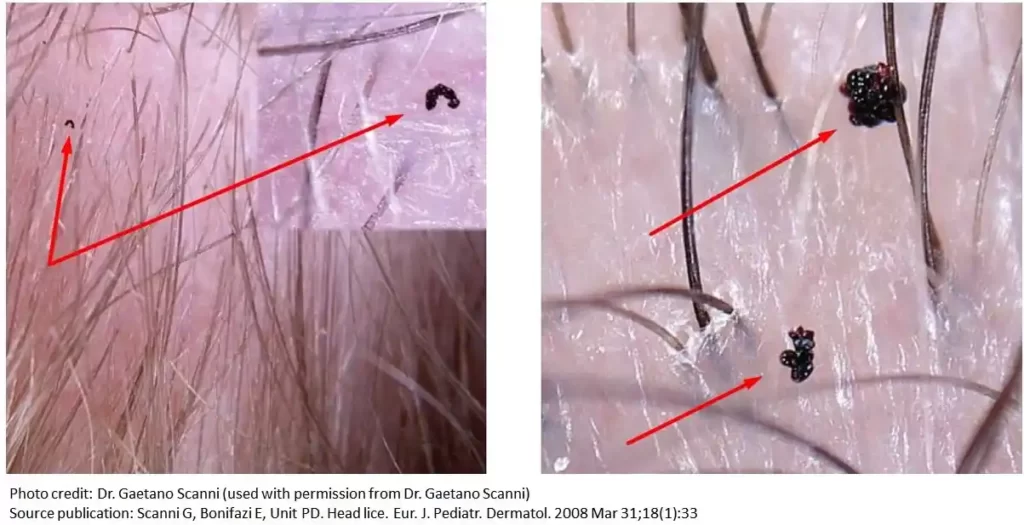
Believe it or not, head lice do poop in your hair and scalps. The lice feces in the hair can cause itching to your head, and these feces are just disgusting.
It is important to closely watch out for lice in your head because itching is usually the first sign of a louse visit. You should check for lice droppings (lice poop) to confirm a lice infestation.
In extreme cases of head lice infestation, you could possibly notice rashes, lumps, and bumps, especially at the back of your neck and areas around the ear. These are the focus areas because they tend to be warmer than the rest of the head. Therefore, the back of your neck and areas around the ear offer the best and most conducive thriving ground for head lice.
The thought of head lice feces in the hair is very upsetting for many, but lice themselves do not pose a great threat to the host – contrary to common beliefs. In fact, infestation by head lice is not a sign of uncleanliness!
For the most part, head lice do not cause or spread any diseases is a relief to many, but their continuing resistance to most over-the-counter medication due to overuse is worrying. Extreme cases of head lice might cause skin irritation/inflammation and anemia (in rare cases).
What Does Lice Poop Look Like?
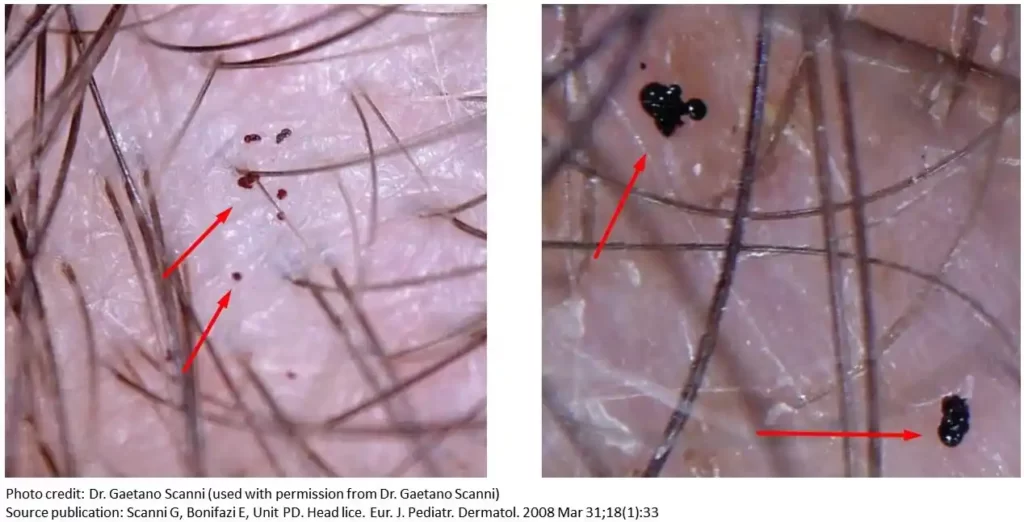
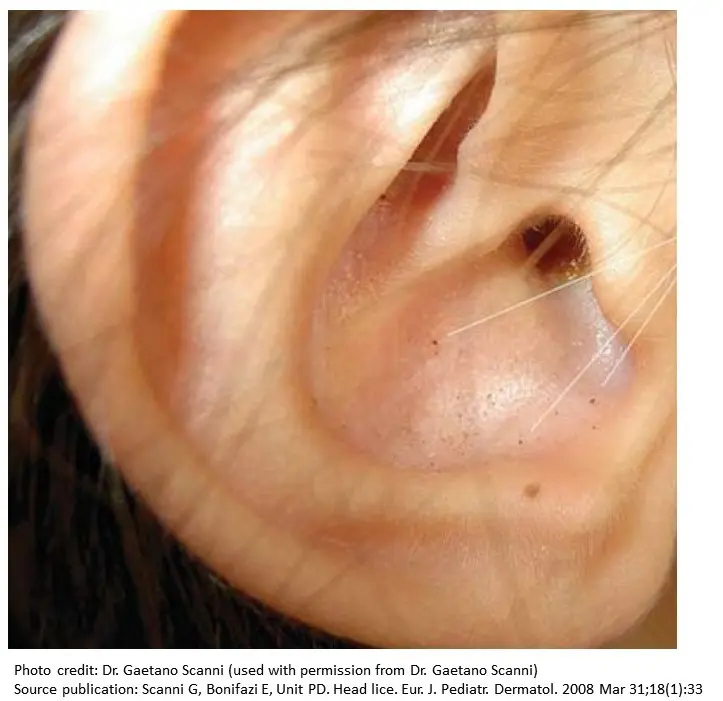

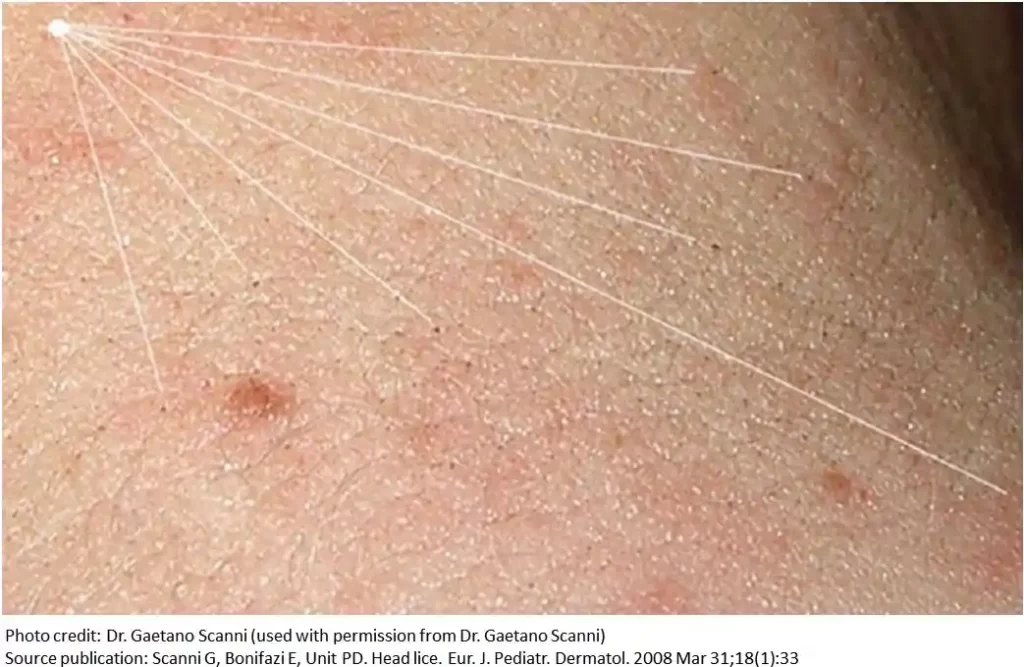
Lice poop (feces) looks like black dots (points) on the skin, hair, or scalp. They are hard to see with the naked eye though, especially in light cases of lice infestation.
Under the microscope, interestingly, head lice poop looks like dark clusters of dots (like ripe black grapes in a way; you got the idea). This head lice poop clustering can be round or linear.
Important Read: Can Black People Get Lice?
What Do Head Lice Look Like (pictures of head lice)?
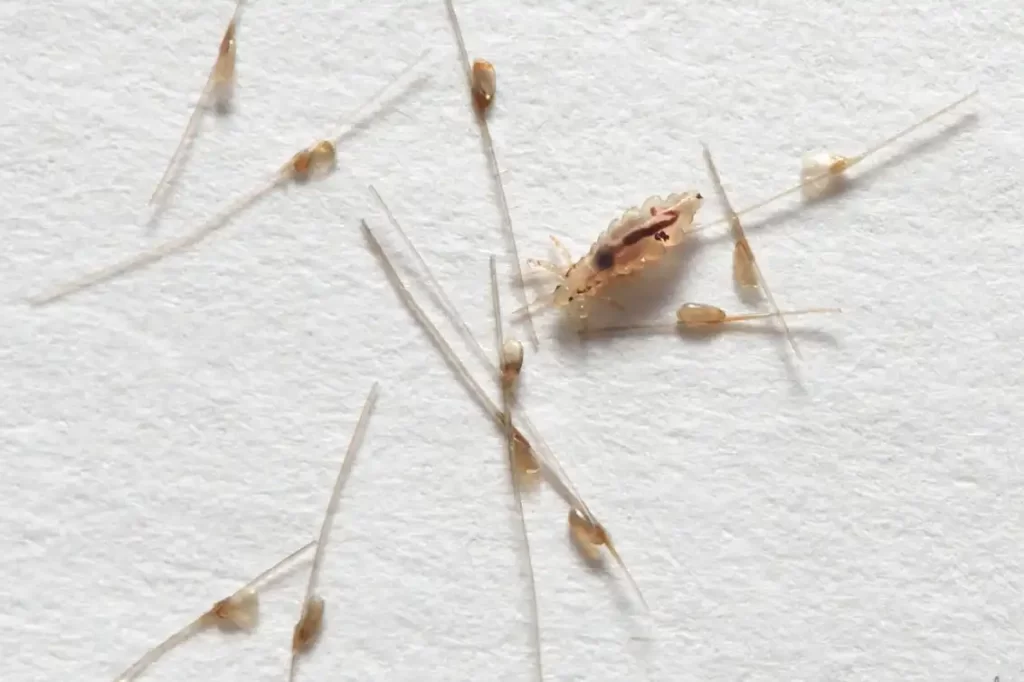
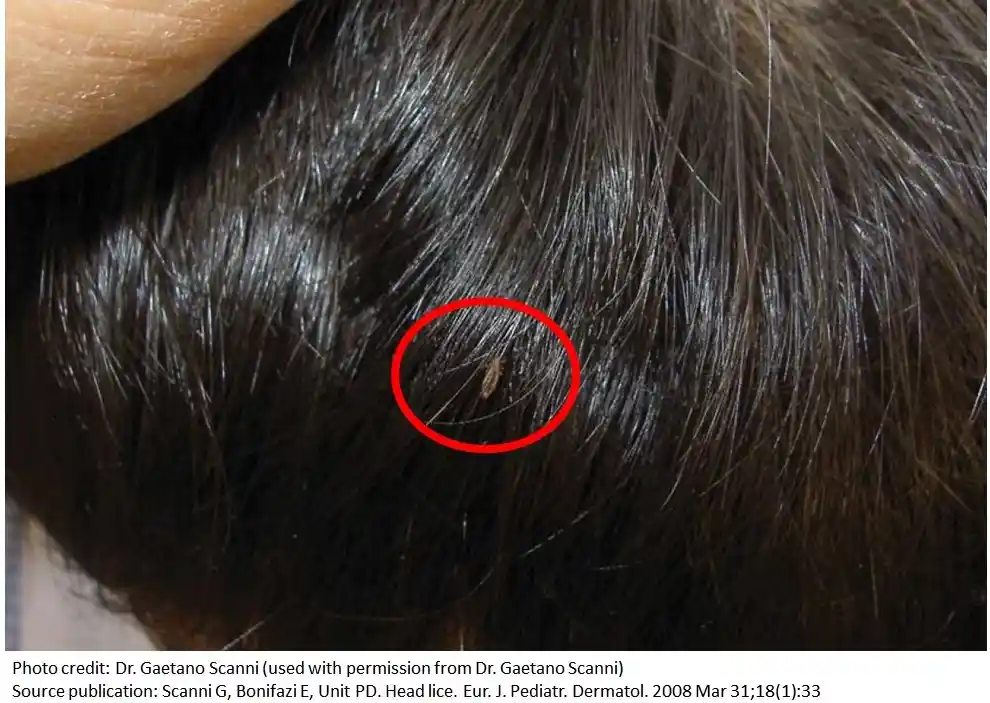
Knowing what head lice look like can help to spot them in the hair early enough and prevent them from spreading to the rest of the household members. Therefore, in this section, we will try and describe pictures of head lice.
Looking at pictures of head lice can provide a glimpse on how these tiny, embarrassing, and stubborn creatures look like in terms of size and color, among other physical features.
A newly hatched nymph is usually grayish-white or tan in color and changes to brownish dark color as it grows into an adult louse. As shown in these pictures, the color of adult lice varies from gray to dark brown color.
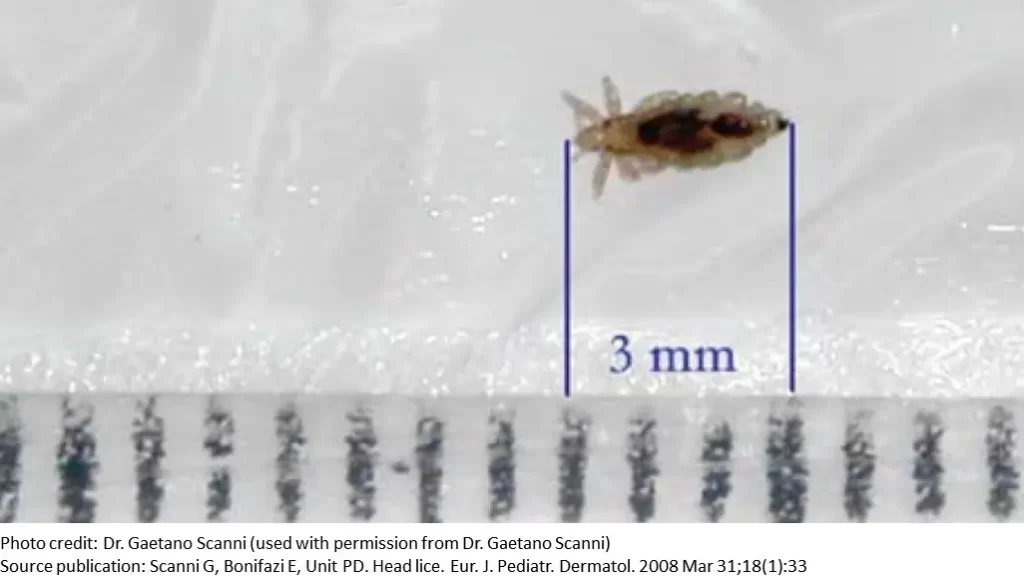
In terms of actual size, a mature head louse is about 2-3 millimeters or sesame seed size. This parasite has six legs and you can also notice from the pictures that a mature female head louse is slightly larger in size than mature male head lice.
The louse claws are also visible in these pictures- these claws help these creatures to hold onto the hair and move around in the hair. With a closer look at an adult head louse, you are likely to notice an abdomen filled with red blood it feeds on.
Important Read: Lice vs Super Lice
Head Lice Nits Pictures
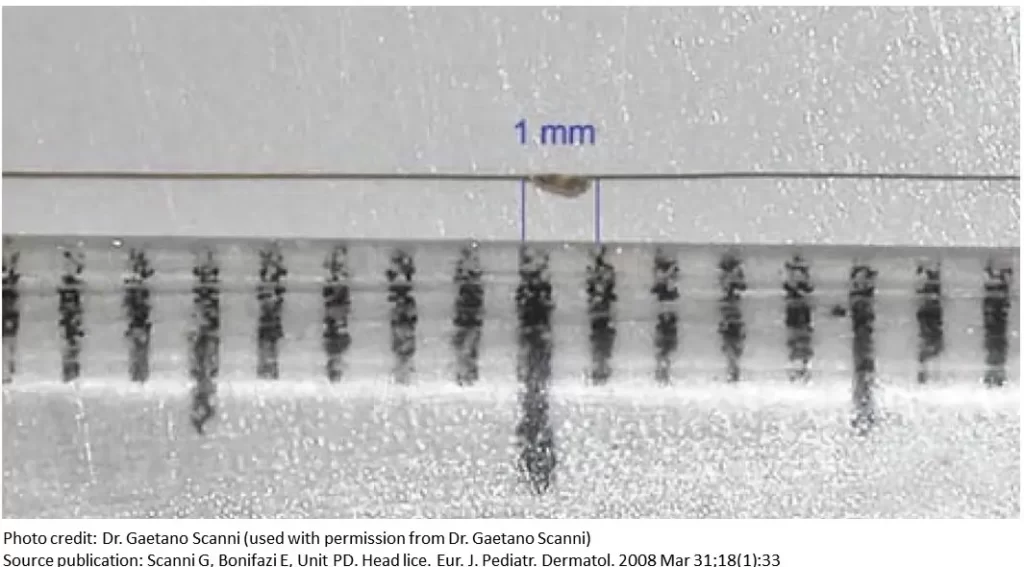
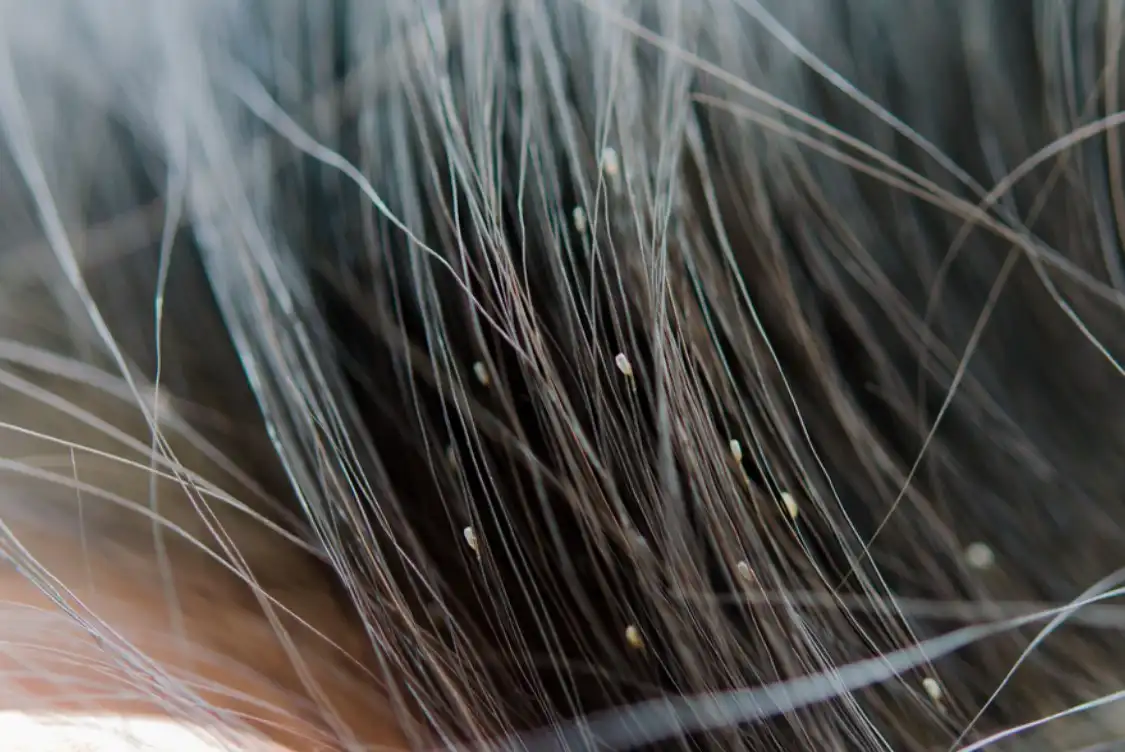
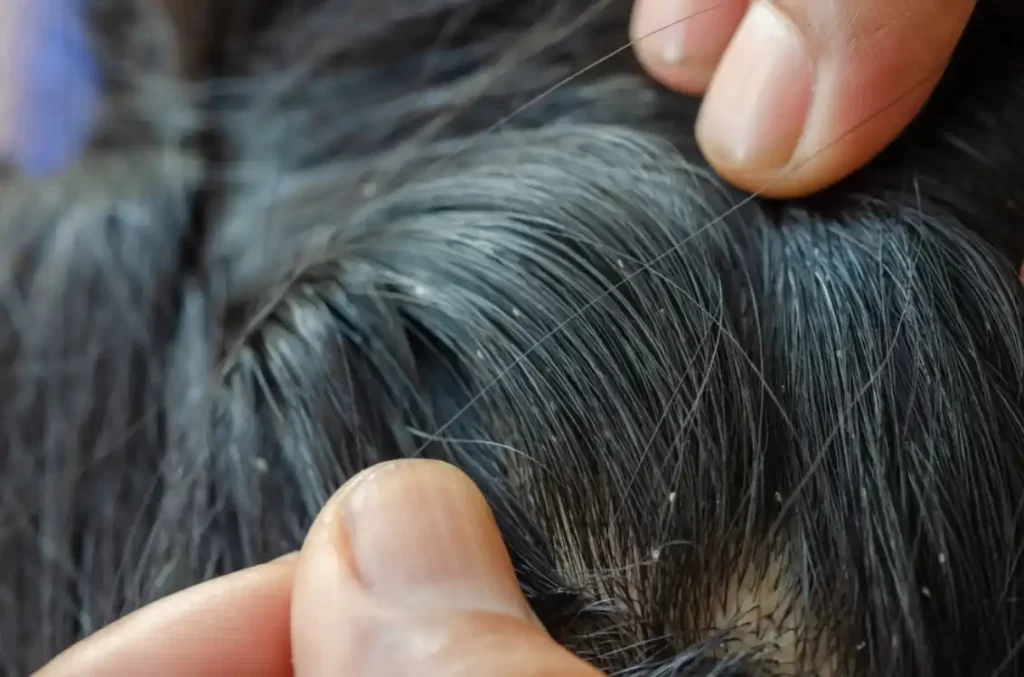
Head lice eggs can be found on hair strands. Most of the pictures are taken using high-resolution cameras.
What color are lice eggs?
Lice eggs are generally of pale color ranging from greyish to yellowish to tan. These light colors are what makes them easy to spot even in the dark regardless of the hair color.
Head lice dead Eggs (dead nits) images
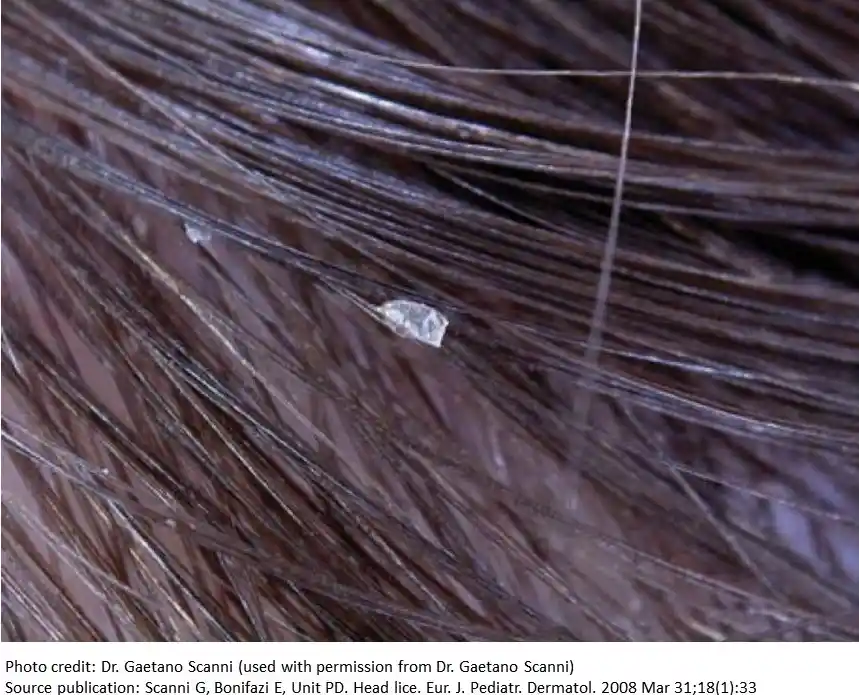
Live nits are usually located on the hair shafts, just a few mm from the scalp- usually a quarter an inch or less than one centimeter from the scalp.
On their actual size, nits or louse eggs are microscopic- estimated to measure 0.8 and 0.3 mm in length and width respectively (see pictures).
Because of their tiny size, they may not be easily spotted by the naked eye. Nits are often confused with dandruff among other dirt and debris found in human hair.
Dead or nonviable head lice eggs are located further away from the scalp – there is no need to bother to remove them from your hair because they cannot hatch.
Head lice dead eggs pictures can be obtained after treatment with RID lice and combing out the gel. A dead nit is whitish in color but has a small brownish shade towards one far end.
You should also note that an empty nit casing (eggshell) is white in color and tends to move farther away from the scalp.
What color are dead lice eggs?
As indicated earlier, dead lice eggs are white in color, but they tend to have brownish coloring toward one of the two ends. These are also easy to spot because of the general whitish appearance on the hair.
Important Read: Lice vs Super Lice
Lice Nymph Pictures
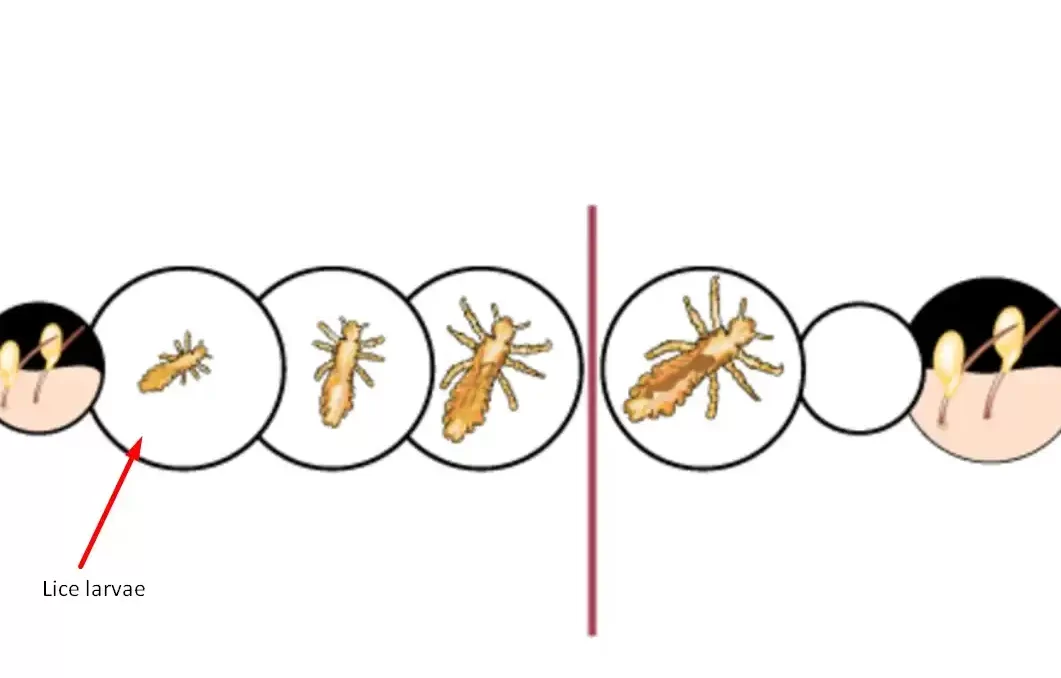
Young head lice or nymphs are usually clear or light in color after hatching, but they change color to gray, brownish, and become dark as they mature into adult louse.
Immature louse or nymph looks more like adult head lice (see pictures) but is usually smaller in size. A live nymph feeds on human blood for sustenance.
The nymph moves towards the scalp after hatching and matures into adult lice within 9-12 days.
Head Lice Life Cycle Pictures
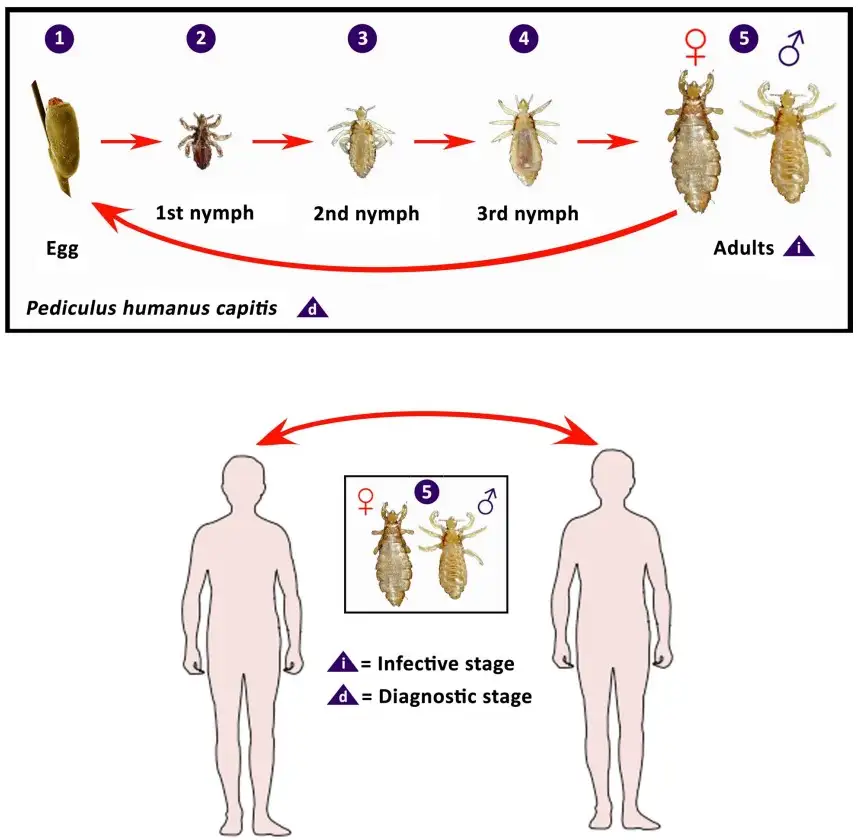
There are basically three stages in the life of head lice- the egg, the nymph, and mature head lice. A fully grown head lice appear tan to greyish whitish in color and have six legs with claws for holding onto the hair.
A head louse lives for about 30 days climbing on the hair, reproducing, laying eggs, feeding on blood several times a day. And that’s what we know today.
It may seem questionable but from the point of view of the head louse, the human head is not just a source of food, but it is also the most important place to live or actually the only one.
With regard to the actual size of a head louse, as per the CDC photo shown here and per Dr. Scanni publication, a mature head louse is about 2-3 millimeters or sesame seed size.
You can also notice that a female head louse is slightly larger in size than male head lice.

Head lice tend to resemble the color of the hair they infest- lice in dark hair tend to be darker in color than those in light-colored hair.
Head Lice Bites Sores
When head lice bite, you may have sores developing on your scalp. In most cases, the sores are not serious, but always consult your doctor if you feel bothered, specifically if:
- The sores last for several days without healing
- Sores become so many in number and keep coming back
- If you notice changes in the size, shape, and color of lumps and bumps on the scalp.
Head Lice Treatment
Once present, head lice will never go away on their own, and appropriate treatment should be applied in line with the treating physician’s instructions.
It is important to note that the use of compounds that kill lice (pediculicides) should only be employed in instances of confirmed lice infestation.
These products should never be used as a preventive measure for healthy individuals at risk of infestation, as their effects are not long-lasting and can cause significant inconvenience for patients.
Additionally, physicians must be aware that these pediculicides may not be effective against all types of lice eggs, as the very young embryos without a nervous system are not affected by neurotoxic pediculicides.
As a result, a follow-up treatment may be necessary within 7-10 days to ensure all viable eggs are treated during their maximum susceptibility to the medication (Scanni and Bonifazi, 2008).
First Generation insecticides
Pyrethrins, which are derived from the Chrysanthemum cinerariaefolium plant, have been known for their effectiveness against lice for centuries.
The active substances in pyrethrins, known as pyrethrin, jasmolin, and cinerin, work by blocking the sodium channels in the nervous system of the insect.
However, their effect is short-lived, which is why they are often combined with piperonyl butoxide to prolong the blockage and ultimately cause the death of the louse. Additionally, this combination helps prevent the development of resistance.
While natural pyrethrins have been effective, they can be affected by heat and light, and they are not always ovicidal.
Additionally, repeated usage may lead to allergic dermatitis and respiratory issues in people with pollinosis.
An alternative to natural pyrethrins is permethrin, a synthetic pyrethroid that is resistant to heat and light and is less toxic to mammals. It is available under the name Nix or in generic forms as a 1% cream. However, due to resistance, a second application may be necessary after 7 days.
Another option for treating lice is the use of malathion, an organophosphate that irreversibly inhibits cholinesterase.
It is the quickest-acting product on lice, but it can be potentially toxic. It is available in alcoholic solution, gel, and shampoo form.
However, due to its smell and potential for causing headaches, it is typically used in gel form for two 10-minute applications with a one-week interval.
Carbaryl is another cholinesterase inhibitor that has low toxicity for mammals. It can be used in lotion form for long periods of time or as a shampoo with similar application methods to malathion.
Lindane, an organochlorine, was also commonly used in the past as a shampoo or alcoholic lotion. However, it has fallen out of favor due to its potential for neurotoxicity, lack of biodegradability, and potential to induce resistance.
Recently, it has been discovered that cotrimoxazole (sulfamethoxazole-trimethoprim) has pediculicide activity, likely due to its ability to kill the symbiont bacteria that are essential for the survival and reproduction of lice.
However, this antibiotic treatment is not recommended for pediculosis unless the child is also affected by pyoderma.
Natural remedies
- In the 1990s, a new natural pediculicide was introduced to the market, consisting of extract of coconut, two natural oils (anise oil and ylang ylang oil), and isopropylic acid.
- This product, known as HairClean 1-2-3 in the United States and Paranix in Europe, works by occluding the tracheal lumen of lice, causing their death by suffocation.
- The product is non-toxic and does not cause resistance and has a good pediculicide activity.
- It should be sprayed on all the hair and kept for 15 minutes, and the treatment should be repeated after 9 or 10 days.
- The natural oil-based product was found to be as effective as malathion, with recovery seen in most cases within 3 days of the first application.
- The popularity of this natural oil-based product has led to an increased interest in other natural oil-based treatments.
- Studies have shown that Eugenia caryophyllata bud and leaf oil-derived, Eucalyptus globulus, and extracts of eucalyptus, marjoram, pennyroyal, and rosemary are more effective than pyrethrum.
- Other essential oils like Cinnamomum zeylanicum, Annona squamosa seeds, Melia azedarach, and Hedychium spicatum have also been found to have pediculicide activity.
- Essential oils of lavender, peppermint, and eucalyptus have also been found to have significant pediculicide activity, especially when combined with 1-dodecanol.
- Essential oils of tea and lavender were found to be more effective against head lice than lemon oil, and all three oils were effective against mites.
- Some essential oils, particularly 1,8-cineole, have been found to inhibit acetylcholinesterase activity, which is responsible for the pediculicide activity (Scanni and Bonifazi, 2008)
New Lice Therapy Proposal by Dr. Scanni and Bonifazi
- Treatment for lice should begin immediately after diagnosis, using natural oils that have a short application time (15-20 minutes).
- The product should be sprayed carefully on the entire scalp, making sure to completely moisten the hair. The amount of product used should be proportionate to the amount of hair being treated.
- Combing immediately after treatment, using the lubricating effect of oils or an after-shampoo to remove nits, lock by lock, until all lice and nits are removed.
- Daily combing when returning home from school to intercept any new lice that may have been acquired from children who are not yet aware they have lice, using a professional comb, for at least 4 days, or until no lice or nits are found for 2 consecutive days.
- From that point, combing with a professional comb every 3 days for 4 times.
- If lice are found during any of these combing sessions, return to step 1. If only nits are found, return to step 2.
References on Pictures of Head Lice & Lice Poop Pictures
- Head lice. (2015, April). Retrieved from http://kidshealth.org/en/parents/head-lice.html
- www.entodermoscopy.net
- www.gaetanoscanni.it
- Scanni and Bonifazi, 2008: https://www.gaetanoscanni.it/data/uploaded/media/Educazione%20Sanitaria/PUBBLICAZIONI%20articoli/2008_HEAD%20LICE%20G%20Scanni_%20E_%20Bonifazi.pdf
- Head lice FAQs. (2015, September 2). Retrieved from http://www.cdc.gov/parasites/lice/head/gen_info/faqs.html
- Mayo Clinic Staff. (2015, March 28). Lice. Retrieved from http://www.mayoclinic.org/diseases-conditions/lice/basics/definition/con-20021627
READ MORE:
- Where Can I Purchase Bed Bug Bombs? - January 30, 2023
- Where Can I Buy Something to Kill Bed Bugs? - January 30, 2023
- Where Can I Buy Bed Bug Spray? - January 30, 2023
